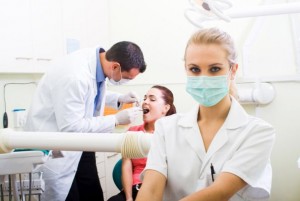 Prop dental, the network of dental clinics run by Barcelona specialized in dental implants surgeon Dario Pereira Vieira, are specialists in the different treatments based on the dental veneers. They tell us the main differences and in what situations this treatment serves.
Prop dental, the network of dental clinics run by Barcelona specialized in dental implants surgeon Dario Pereira Vieira, are specialists in the different treatments based on the dental veneers. They tell us the main differences and in what situations this treatment serves.
Implement veneers, whatever they are, are recommended when the anatomy of the teeth is not aesthetic, where one or more teeth are broken or destroyed by decay or the tooth color is so sharp that it cannot be done through of tooth whitening methods we know. In all these cases, when the dentist recommended veneers.
The oldest that exists on veneers, treatment is porcelain veneers, veneers external tooth surface by a layer of porcelain to enhance your dental aesthetics and achieve a perfect smile. The porcelain veneers allow you to change the shape, color, width and height of the teeth.
Today, the latest innovation in the market for veneers are without dental carved, the same system explained, but without the need of filing or grinding the original tooth to them, as they are as thin as a contact lens.
Most currently known in the market are Luminaires veneers, coming direct from USA. Unlike conventional porcelain veneers are 0.3 mm thick, overlapping enamel or intervene without sacrificing tooth tissue to reduce it or mold it. Therefore it is not necessary or anesthetizes the patient or liable teeth in record time of two visits the smile that gets the patient desired.
This cosmetic dental treatment is used by most artists of Hollywood, which for years have been using veneers without carved by its effectiveness and because their real teeth are not at risk. That’s why it’s called colloquially treatment ‘Hollywood Smile’.
Veneers: the ceramics are relatively new materials used for the manufacture of inlays, veneers, crowns and bridges. It is an optimized polymer incorporating fine particles in the ceramic composition and reinforcing fibers. This homogeneous, three-dimensional structure gives an extremely vital aspect, coupled with a high resistance to torsion and a rate very similar to dental enamel abrasion.